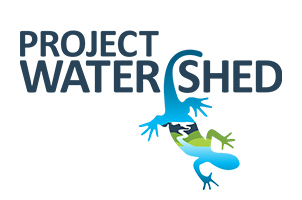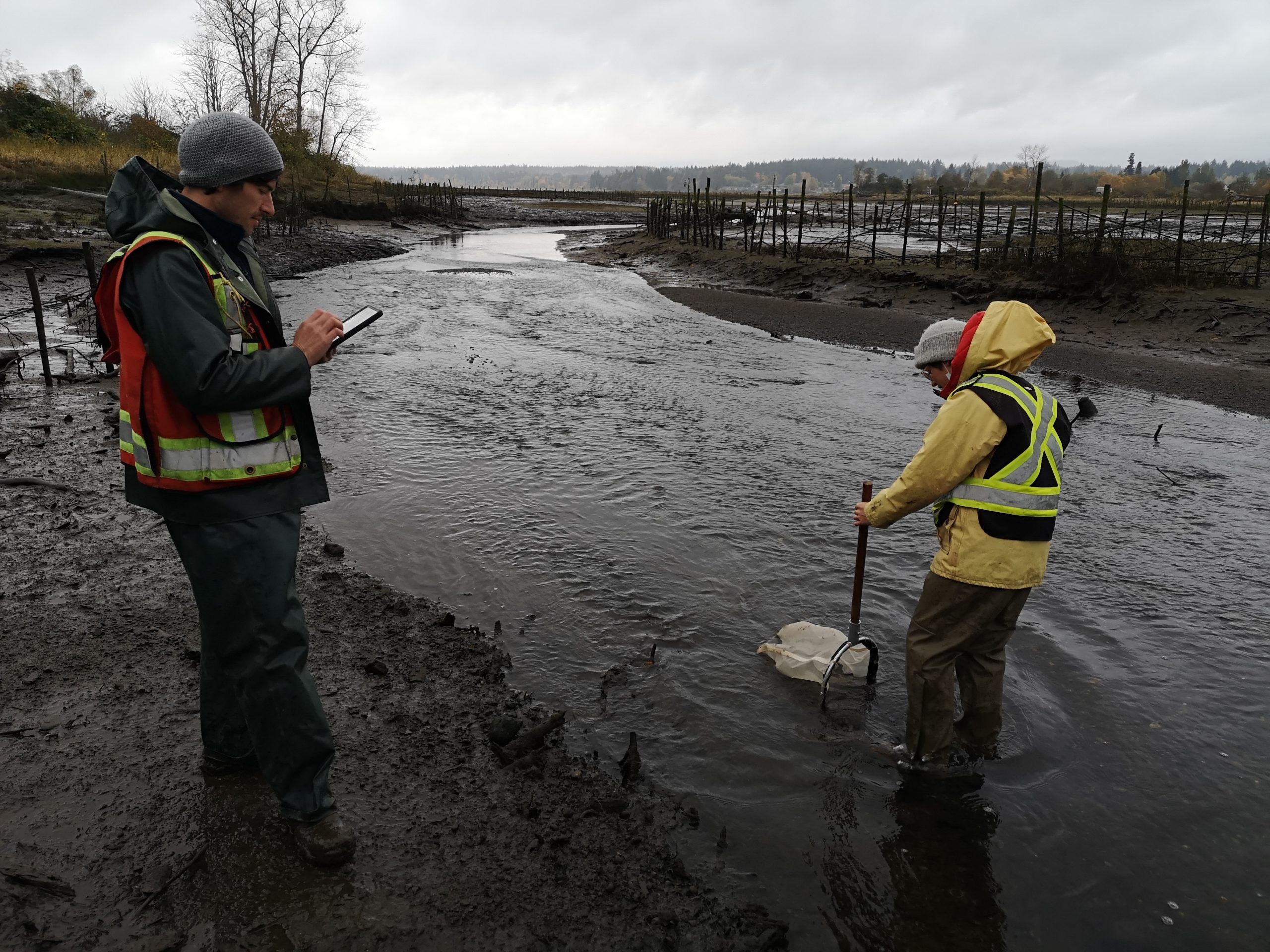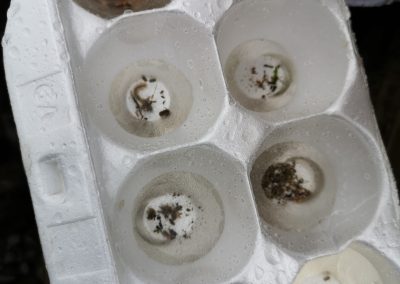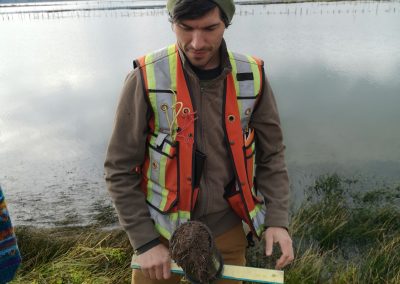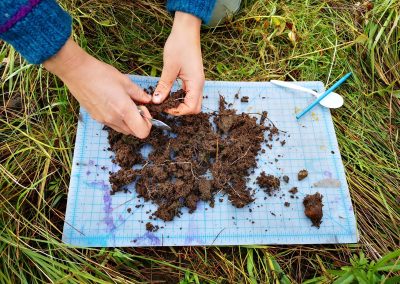Technician Report – Tuesday, October 19th
Invertebrate Sampling ~ By Jamie Lund
Benthic invertebrate sampling was tested by the team at Hollyhock flats. A net was placed in line with a channel’s flow, then someone held it in place and shuffled their feet slightly in front of it for two minutes. This dislodged invertebrates from the substrate so that the water flow would carry them into the net. The net was then emptied into a fine mesh sieve and rinsed with ocean water to remove silt. A small white container was filled with water and the sieve contents emptied into it. Invertebrates like crabs, worms, isopods, and amphipods were then identified. Invertebrate sampling will be used at Kus-kus-sum as a component of restoration success assessment as they are straightforward to sample and a well documented indicator of ecosystem health.
Sediment sampling was also tested. A PVC pipe was used to take a small sediment core. Its contents were then emptied into a white tray with a grid on it and flattened into a thin layer. Our team looked at the sediment sample to understand its ratio of cobble, pebble, gravel, sand, and mud. Once this monitoring method is implemented, it will be used at reference sites like Hollyhock to model sediment at Kus-kus-sum. Once Kus-kus-sum is restored, this monitoring method will be used there to plant the right species in each sediment condition.
In the future, volunteers will be collecting this data at Kus-kus-sum. Want to get involved? Join our volunteer list for opportunities and updates!
With the help of the Healthy Watersheds Initiative funding Project Watershed has hired environmental technicians to assist with our projects over the summer and early fall. The Healthy Watersheds Initiative is delivered by the Real Estate Foundation of BC and Watersheds BC, with financial support from the Province of British Columbia as part of its $10-billion COVID-19 response. Jamie Lund, one of these technicians, will be posting a brief report every Tuesday to update the Project Watershed community on what they have been up to.
Related Posts
Mallard Creek Restoration Update for 2024
Restoration work in Mallard Creek will continue this year, including invasive removal, restoring connectivity, and trial planting of a new riparian species. Volunteer events starting in September 2024.
Volunteer at Kus-kus-sum Chamber of Commerce Event
We are showing Kus-kus-sum off to businesses in the Valley through a Chamber Business to Business event. We are looking for a few volunteers to assist with this event.
Coastal Plant Monitoring
Get involved with our new vegetation community science monitoring program!
Spring Field Trips
Throughout May and June Project Watershed will be taking elementary school classes out on field trips to learn about estuary and coastal ecology and to assist with planting and plant maintenance.
Working Together to Identify Forage Fish Spawning Beaches
This year marks the 5th year of a partnership between Comox Valley Project Watershed Society and North Island College on a long-term study to examine intertidal spawning habitats of forage fish in the northern Salish Sea.
Glen Urquhart Update – Spring 2024
Latest news from Glen Urquhart restoration progress for spring 2024.

